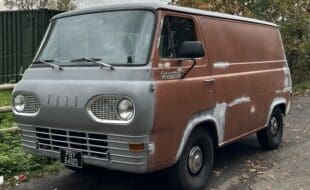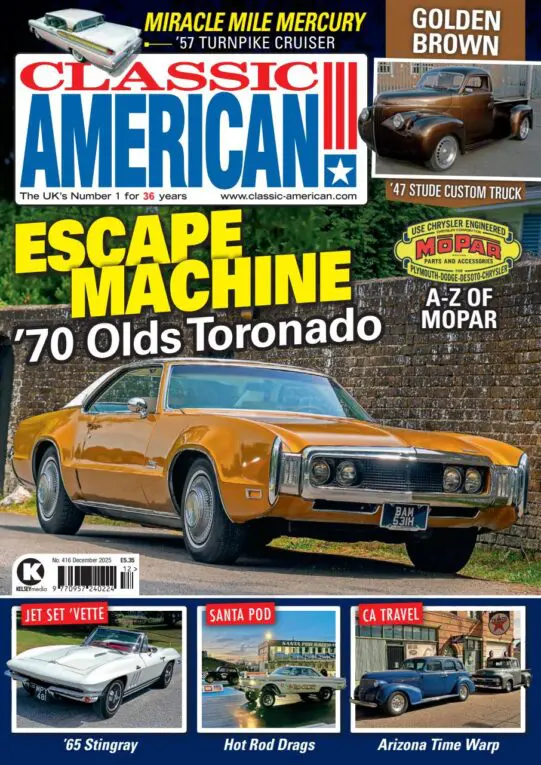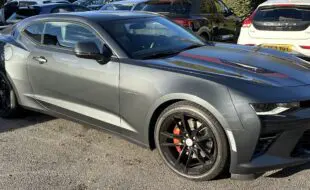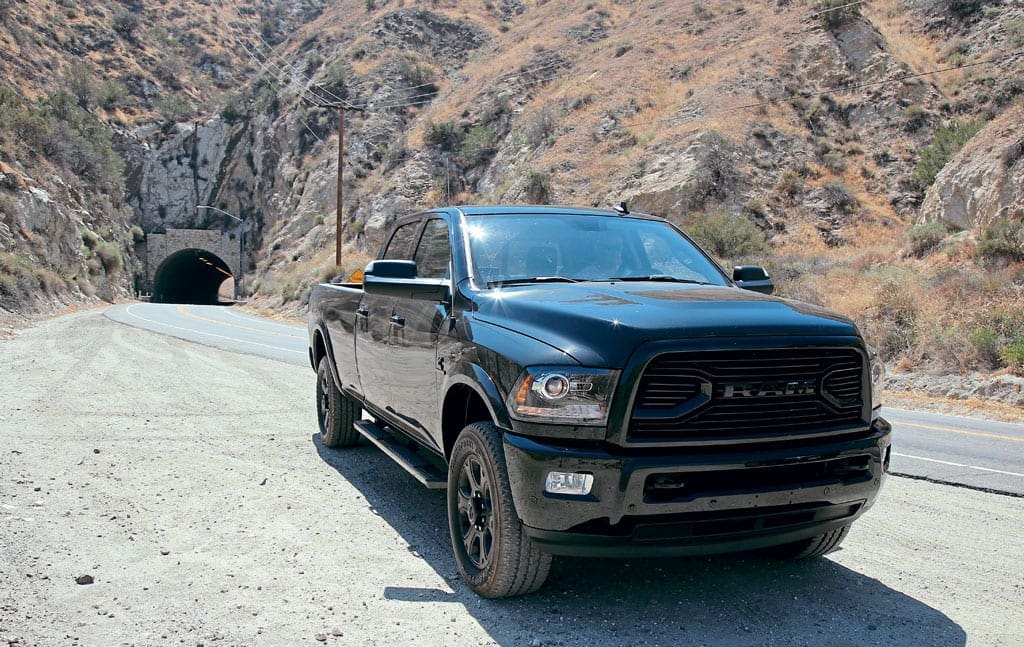
We join Will Shiers on a 2800-mile trip through California, Nevada, Idaho, Washington and Oregon, as he searches for abandoned cars for your pleasure.
“If you come home with a suntan I’ll be very annoyed,” says my wife, as I kiss her goodbye and head to the airport, leaving her to look after the kids for the week. She’s got it into her head that my annual Discoveries trip to the US involves me searching for old cars for a couple of hours a day, and spending the rest of the time sitting by a hotel pool, being waited on by scantily clad cocktail waitresses!
The reality couldn’t be further from the truth. In the 25 years I’ve been tin-hunting, finding decent abandoned cars has become increasingly difficult. When I first started, almost every town in rural America had a junkyard. These days the few surviving decent yards are hundreds of miles apart, and when I arrive it’s often to find that they’ve just crushed everything old.
Enjoy more Classic American reading in the monthly magazine.
Click here to subscribe & save.
The trip I’m about to embark on will see me travel almost 3000 miles, on a round trip through California, Nevada, Idaho, Washington and Oregon. Don’t get me wrong though, although it’s a lot of driving, and most of the rundown hotels I stay in don’t even have soda vending machines let alone cocktail waitresses, I still love every minute of it. Not that I’d ever admit that to her!
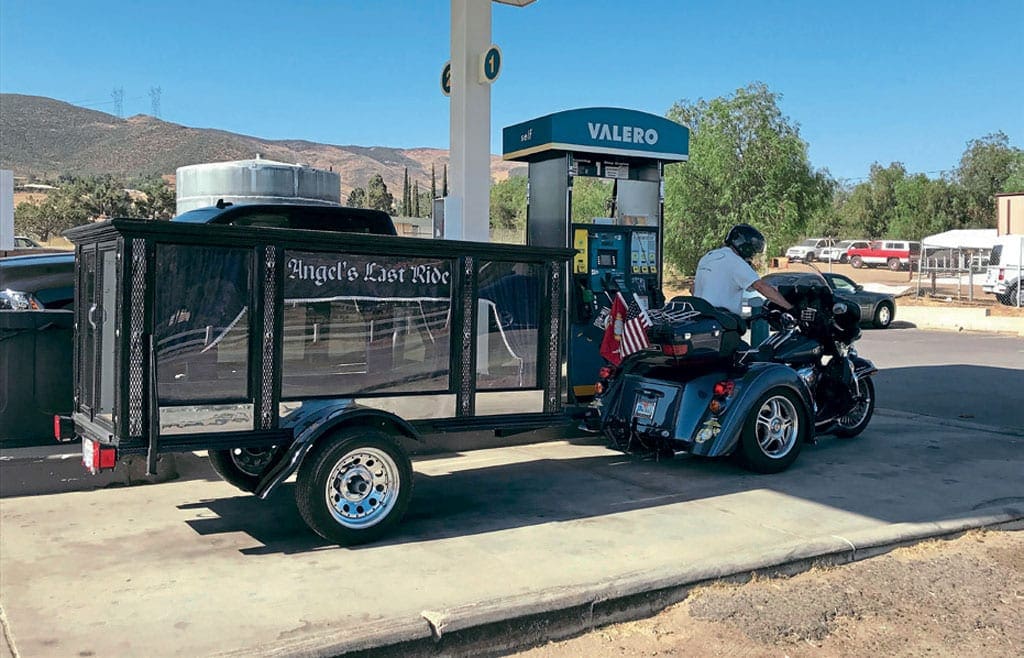
Day 1
I flew into San Francisco late last night, and picked up my steed for the week, a brand new Ram 3500 Laramie Crew Cab 4×4 Long Box. The basic price for one of these monsters is $50,000, but my one has an additional $22,000 of options. It looked fantastic last night, and is even better in daylight.
My first stop is a gas station in Salida for AdBlue, or DEF (diesel exhaust fluid), as they call it in the States, as the truck’s gauge is reading empty. Incredibly I spot a few old cars outside the neighbouring building, the highlights being a Packard and a pair of Austin Gypsies. It’s a good start to the day.
I’m heading south to Fresno, home of Turner’s Auto Wrecking. I’ve emailed them a few times but had no response, so I’m not holding out too much hope. But I couldn’t have been more wrong. Not only does the 89-year-old yard owner give me permission to explore the 70-acre site, but tells me to help myself to cold water from the office fridge.
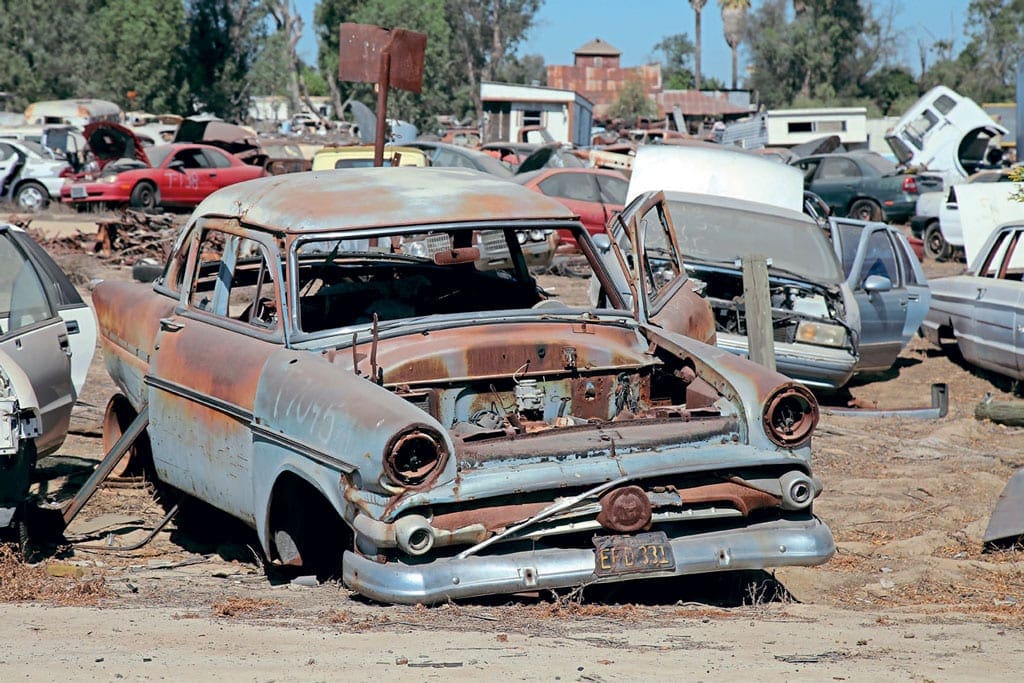
It’s only 10am, but the temperature is already in the low nineties, so the gesture is certainly appreciated. The yard is one of the last true greats, and enthusiasts travel here from all over the US to search for rust-free project cars and parts.
The website says there are 10,000 vehicles here, but I notice a lot of empty spaces, and a guy I meet who’s travelled from Utah to get parts for his Barracuda confirms that it’s a lot emptier than it used to be.
Still, it’s an incredible place, and I spot cars here from the early Thirties through to the present day – including a rare Austin America (Austin 1300 to you and me).
In one corner of the yard, I find a collection of 300 Imperials – all from the 1950s and 1960s – which must surely be the largest collection of this marque anywhere in the world. Another parts scavenger informs me that the cars belong to someone else, who stores them here. Incredibly, he then announces that they are all about to be crushed, and promptly bursts into tears! “I don’t want to talk about it,” he sobs, rubbing his eyes and walking away blubbering.
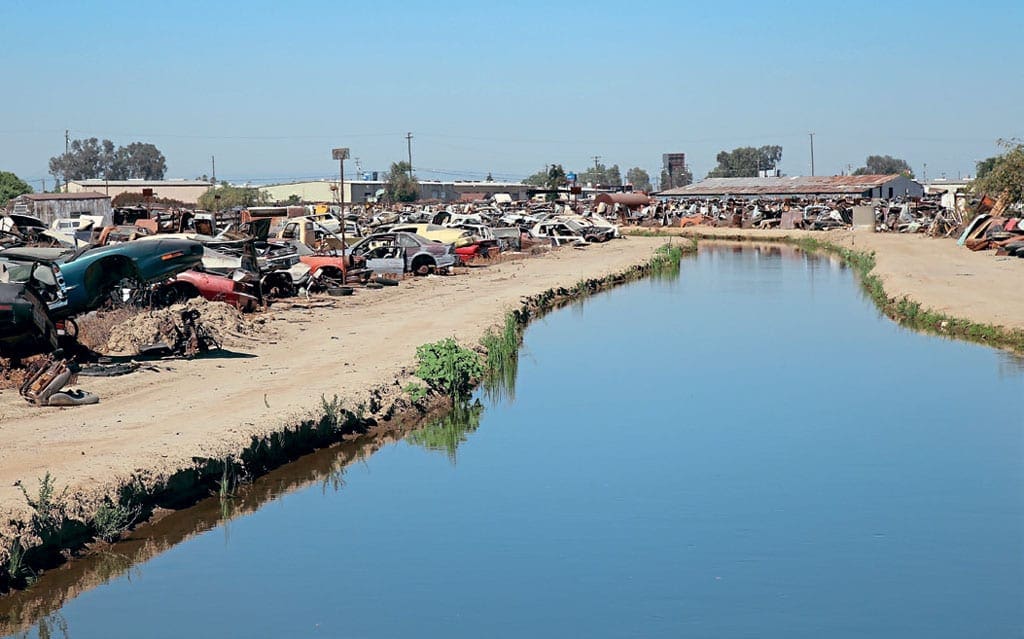
By midday the temperature is into the triple digits, and the river that runs through the yard looks extremely inviting – that is until I spot a snake swimming on the surface! I get back to the truck, crank up the air con, and look at my burnt forehead in the mirror. Why didn’t I wear a hat? This is only going to confirm my wife’s sunbathing suspicions.
On my way to LA, where I will be spending the night, I come off I5 at the Santa Clarita exit. It was in this town, and the beautiful desert and canyonlands that surround it, where Steven Spielberg filmed his classic movie Duel. Who could forget the scary game of cat and mouse between a Fifties Peterbilt tanker and a 1970 Plymouth Valiant Custom?
I manage to find the tunnel where the iconic school bus scene was filmed, and I even locate the place where the vehicles went over the cliff. Unfortunately, it’s on private property, and I can’t get down there. It’s a great shame, because according to pictures I’ve found online, the remains of the truck are still there.
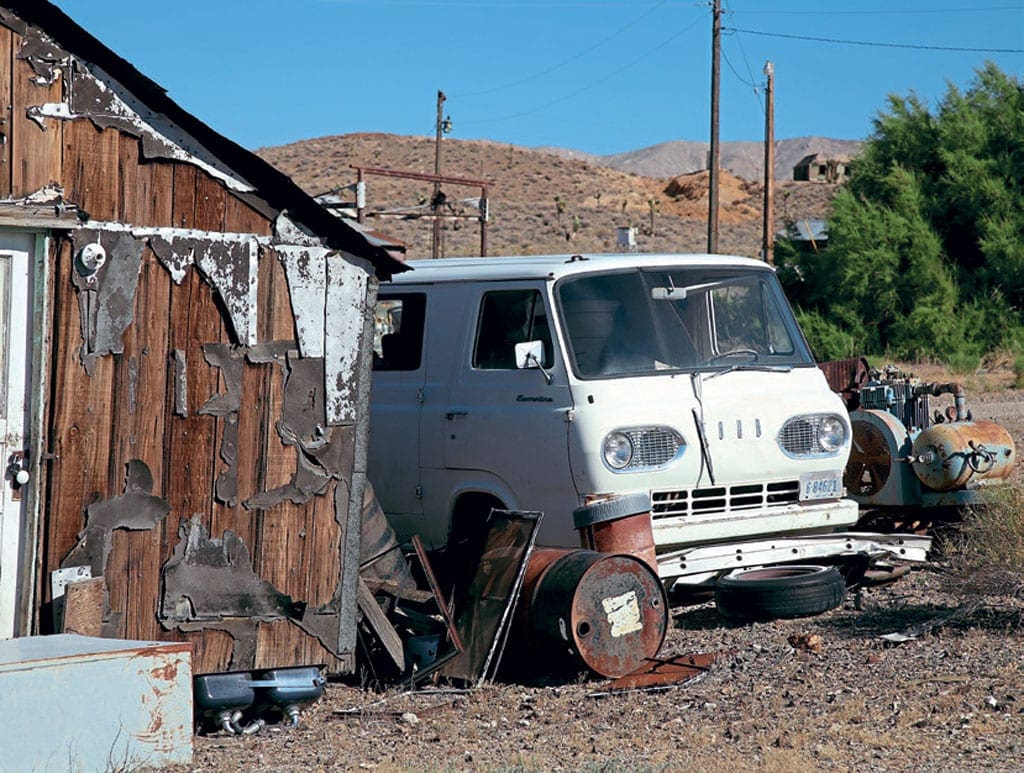
Then I spot a 1960 Ford dumped on the hillside, but it’s too far away to get a decent photo. These two wasted opportunities make me realise that I need to buy a drone.
On my way into LA I stop for gas. Incredibly the truck has averaged 24mpg, which isn’t bad considering that its 6.7-litre Cummins diesel engine would be better suited to an 18-tonne lorry back home! I’ve noticed quite a few people looking at it admiringly today. But it doesn’t generate half as much interest as the motorbike hearse that’s also filling up – ‘Angel’s last ride’ is written in the window.
Day 2
The day starts with a visit to a camera shop, where I purchase a drone. The salesman, who is surprised to learn that I’m buying it to photograph abandoned cars, tells me LA is a no-fly zone, and suggests that I go to the desert to practice. That’s lucky, as I’ll be seeing nothing but desert for the next two days.
As I head out of town I spot a Nash Metropolitan mounted on a pole outside a shop. Over the years I’ve photographed about a dozen of these Anglo-American classics, many of which have been mounted on plinths outside salvage yards. My next stop is Cadillac King, but it’s closed on Saturdays. What a pity, as I’m told there are hundreds of classic Cadillacs on this 16-acre site.
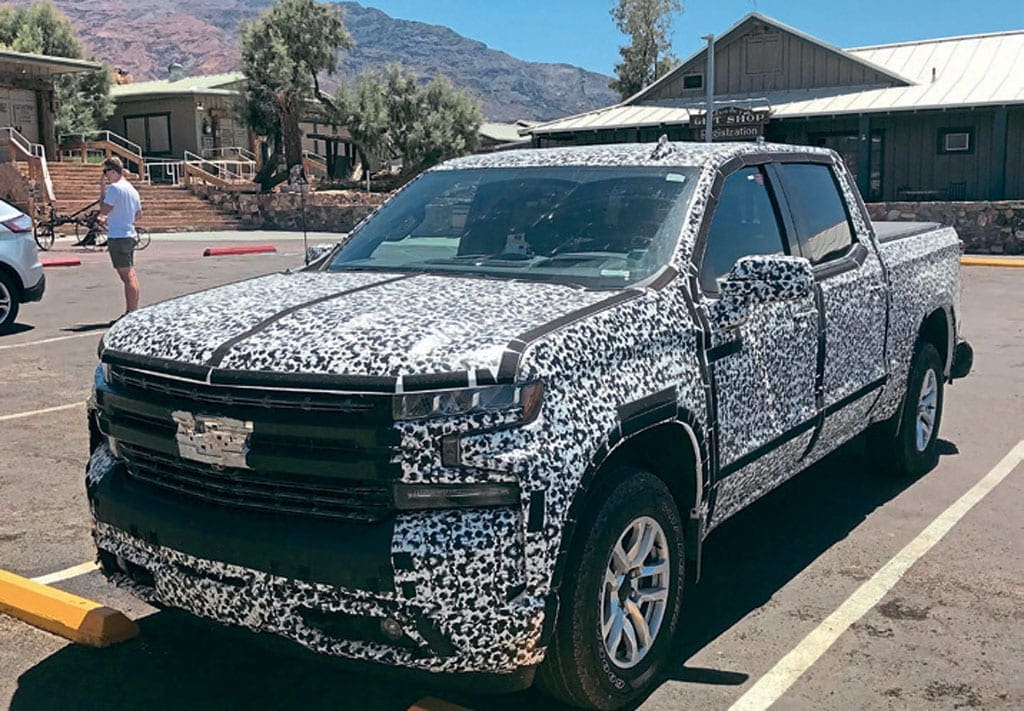
Heading north on Hwy14 I pass an aircraft boneyard in Mojave, which looks amazing, but there’s no time to stop. I’ve been tipped off that there’s a great yard just up the road, and that it closes early on a Saturday.
When I pull up outside it’s to see someone locking the front gate. While he can’t be persuaded to stay open for an extra 30 minutes for me to explore, he does agree to allowing me to fly the drone overhead.
“But don’t go too low in case one of the dogs grabs it,” he warns. After a bit of practice, I manage to get some decent shots. There appears to be about 400 cars here, with nothing later than the 1970s.
The drive to Nevada takes me through Death Valley, and as I enter Stovepipe Wells, the Ram’s external temperature gauge reaches 119 degrees. But it doesn’t bother me, as I’m sitting in air conditioned comfort, on my ventilated leather seat.
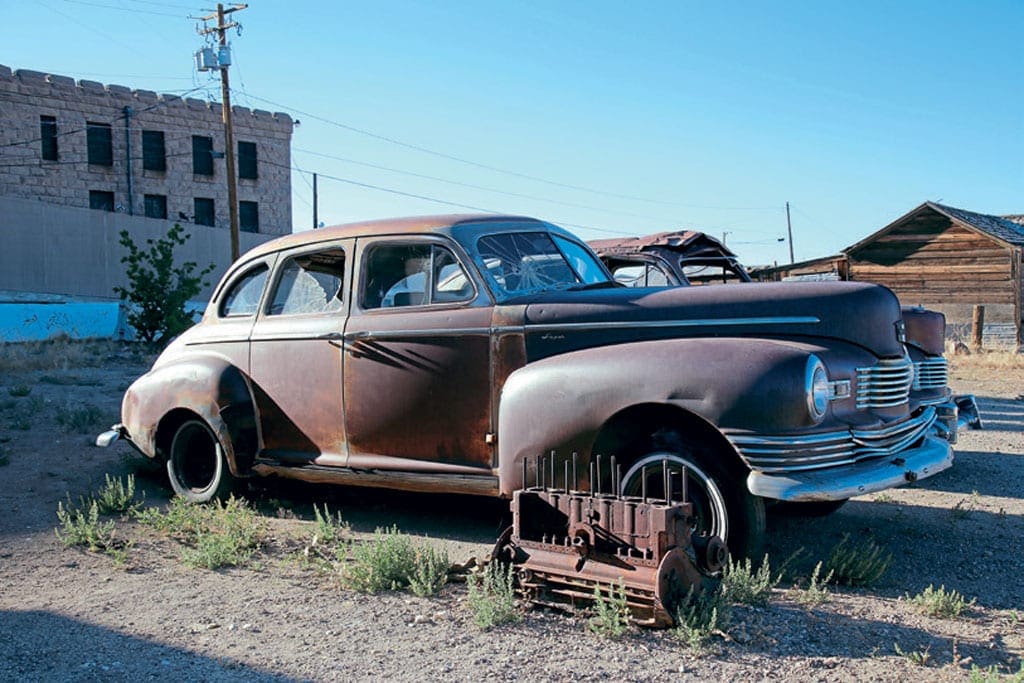
This part of the world is frequently used by car and truck manufacturers for summer testing, and indeed I spot a Chevy truck with migraine-inducing camouflage, lurking behind a gas station. The driver runs out, shouting at me when he sees me pointing my camera at it. The Ram’s acceleration is fantastic!
I’m a huge fan of Nevada, and indeed have spent a lot of time exploring its many ghost towns. One of my favourites, Rhyolite, is just up the road, so I decide to drop by. I haven’t been here since 2000, and nothing seems to have changed.
In 1907 this gold-mining town’s 5000-strong population was serviced by two railways, an opera house, schools, a stock exchange and of course, countless bars and brothels. By the 1920s the gold had gone, and so had the people, leaving crumbling buildings in their wake. One of the most famous is the old Cook Bank, which is in ruins.
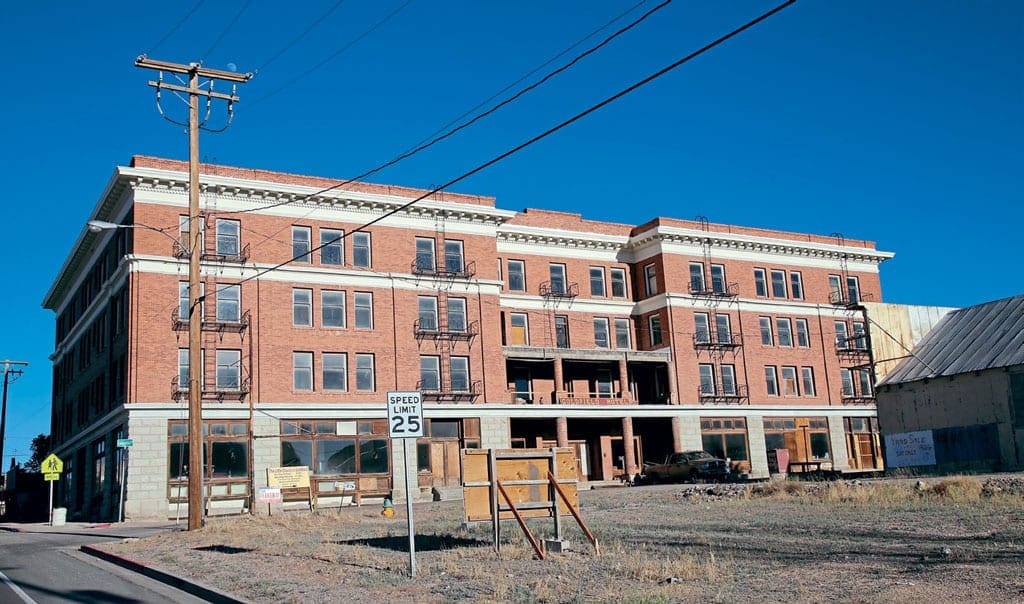
I recognise a 1962 Chevy Impala SS sitting behind a ruin. I took a photo of it 18 years ago, and used it in my book Roadside Relics – America’s Abandoned Automobiles. I also see a familiar 1940s Ford truck.
Gold Point, about 40 miles north of here, is worth a visit too. It calls itself a ghost town, but 27 people still live here. You can actually lodge in one of two very basic miner’s cabins. I stay long enough to get some pictures of a few abandoned cars and trucks, including a 1960s Ford Econoline, and head up the road to my favourite place, Goldfield.
At the turn of the last century when you arrived in Las Vegas, 160 miles south of here, there was a sign that read: ‘Welcome to Las Vegas, the gateway to Goldfield’. That’s how important this place was. With a population of 20,000, it was the biggest city in the state. It even had the biggest hotel west of the Mississippi – which is still standing, but hasn’t opened its doors since the 1940s.
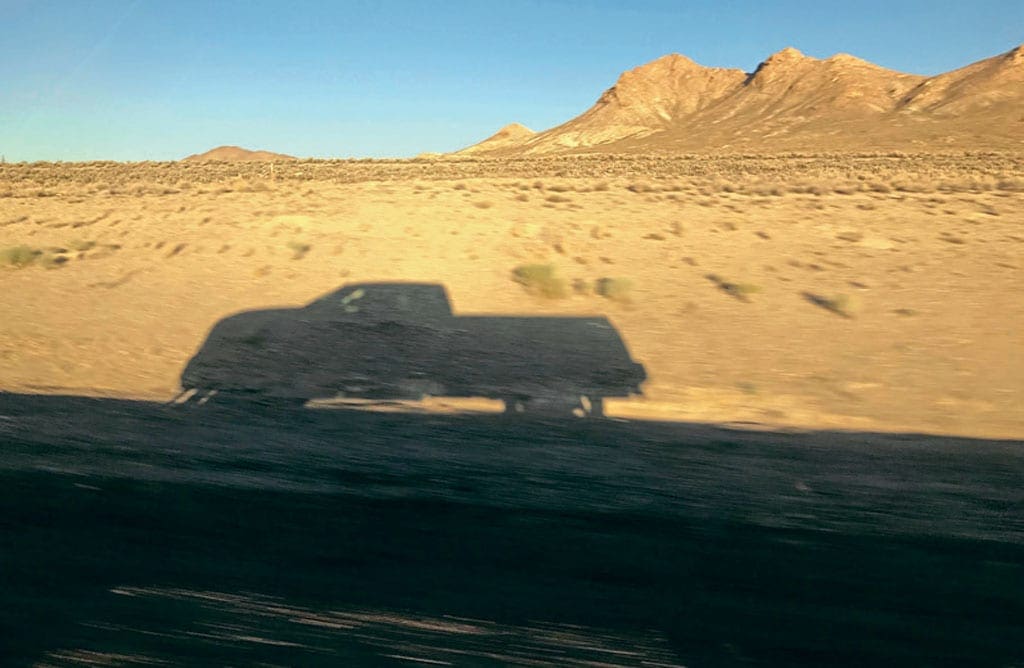
When I first came here 20 years ago, the town was in a terrible state, with tumbledown buildings everywhere, abandoned cars by the roadsides, and a population of just 450. Guessing that things could only get better, I invested in a property – an old gold miner’s house on a plot of desert in the former red light district, for $6000 – ironically, the only house with no cars on bricks in its front yard!
Fast-forward 20 years and the town’s population has shrunk to 250, there are more abandoned cars than ever, my roof has collapsed, someone has dumped a barrel of cyanide in my back garden, and I now have a gun-wielding lesbian neighbour who milks the rattlesnakes living under my bathroom floor! And to top it all, the place is valued at $3000 now.
I still love the town though, especially the old hotel at the end of my road, where Virgil and Wyatt Earp once worked, and which appears in the movie Vanishing Point. I take hundreds of pictures in and around the town, including one of a Ford Model T, a pair of 1948 Nash sedans and a bullet-ridden Econoline van. Tonight I stay 20 miles up the road in Tonopah.
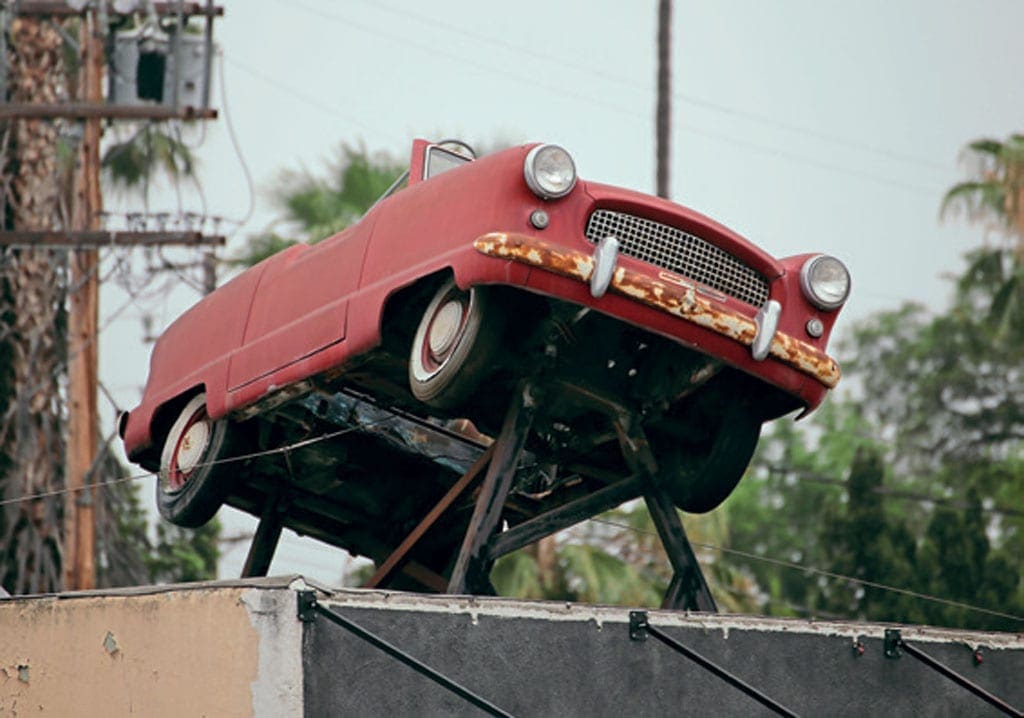
Day 3
The last time I was in Tonopah I recall finding a 1960 Superior-Pontiac ambulance on waste ground, at the edge of town. Incredibly it’s still there today, and I can’t resist photographing it again. While in Nevada I had toyed with the idea of visiting Elon Musk’s new battery factory in – you guessed it – Sparks! But instead I decide to head north east to US50, and then east to Ely, and north to the Idaho border.
My first stop is Manhattan, which is 20 miles up a gravel road. I decide to turn the traction control off, and have some fun fish-tailing up the steep mountainous roads. Manhattan, a far cry from its east coast namesake, is another semi-ghost town. It is littered with old mine workings, and I find a handful of old buildings and a late 1930s Chevy truck. Towns are few and far between around here, as are gas stations, and I fill up whenever I get a chance.
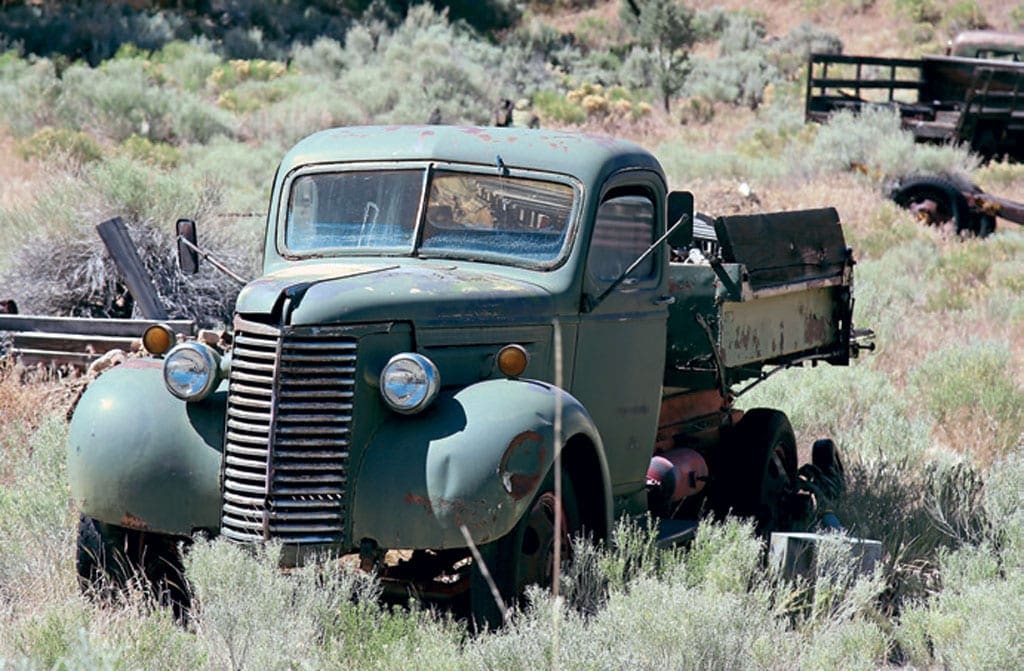
Eureka, on US50, turns out to be good hunting ground. Here I find a couple of old cars and trucks parked outside an abandoned building. The owner, who explains that the vehicles have titles and are for sale for between $2500 and $4500, says the old stone building was once the town’s hospital.
He points to a smaller isolated outbuilding, which was apparently built as a leprosy hospital to house one patient. After he died they discovered that he hadn’t had leprosy at all, and that it was cancer, that had eaten away at his face. There are long straight stretches of road round here, and the traffic is sparse. It’s no wonder that this stretch of blacktop has the nickname ‘America’s Loneliest Road’. It’s a great excuse to fly the drone again.
Ely turns out to be a good town too, with a collection of 20 cars spotted outside a body repair shop. Incredibly it’s open on a Sunday evening, and I’m granted permission to take photos. The owner is particularly proud of a VW Karmann Ghia, but it’s a 1959 Edsel Corsair two-door hardtop that gets my attention.
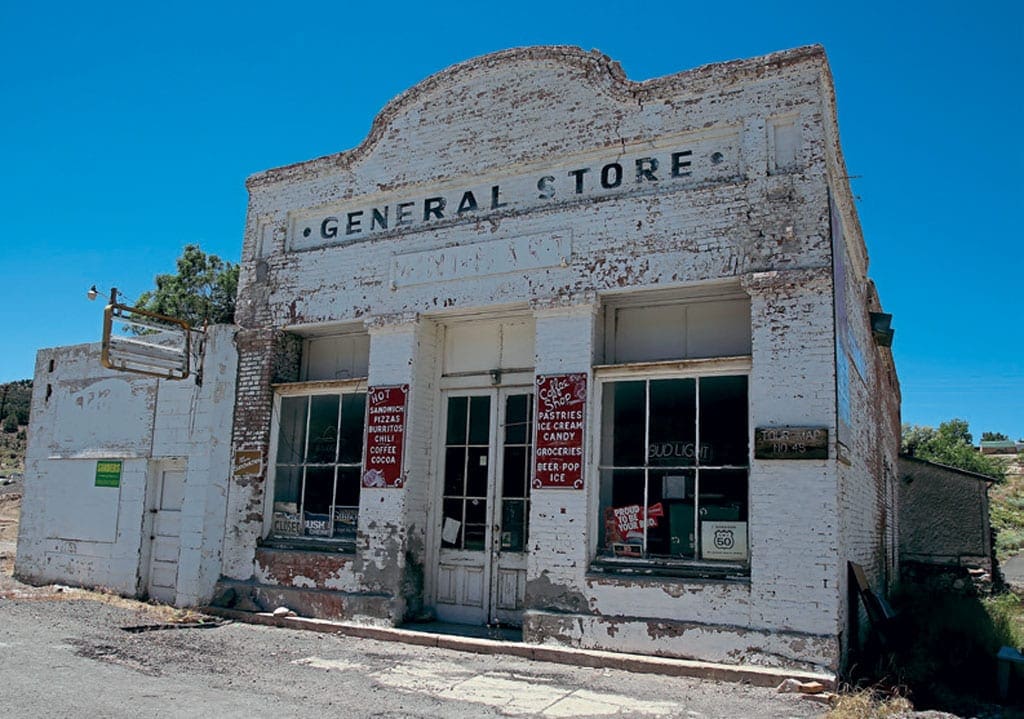
If you keep going east on US50 to the Utah border, you reach the Bonneville Salt Flats in Wendover. It’s tempting to make the detour, but I’ve already discovered that the Ram has been limited to a boring 106mph.
On the drive north to Jackpot, the aptly named gambling town on the Nevada/Idaho border that I’ll be staying in, I pass through McGill. It was once home to Lyman Auto Wrecking, a great salvage yard, sprawled out on the hillside, but today all that remains is a perimeter fence, a derelict trailer and acres of grass, shimmering with broken glass. Scrap metal values are high at the moment, and older, heavier cars are being culled. As usual I’m on a race against time.


